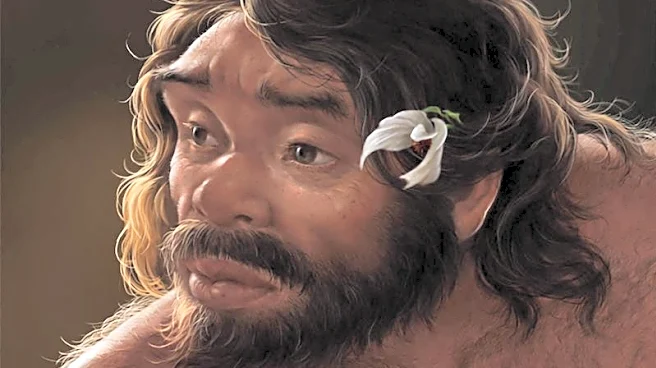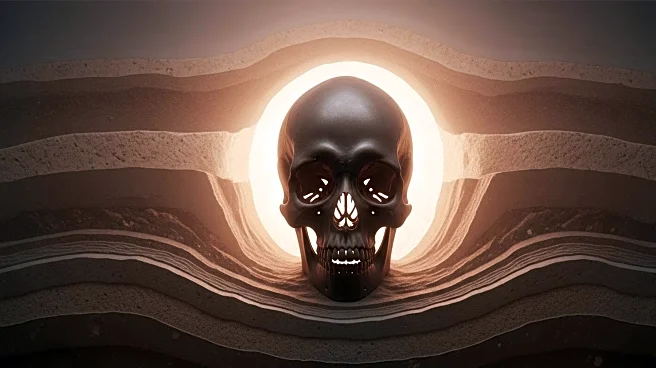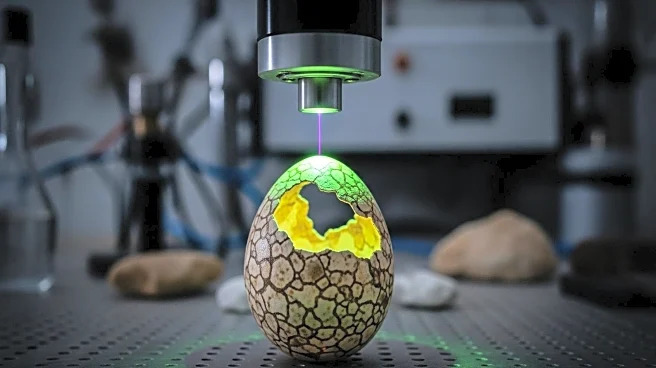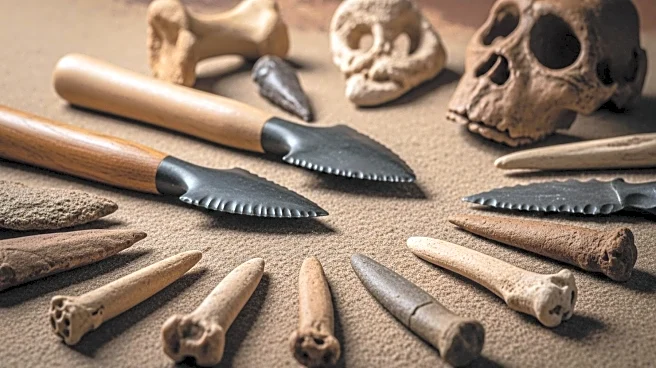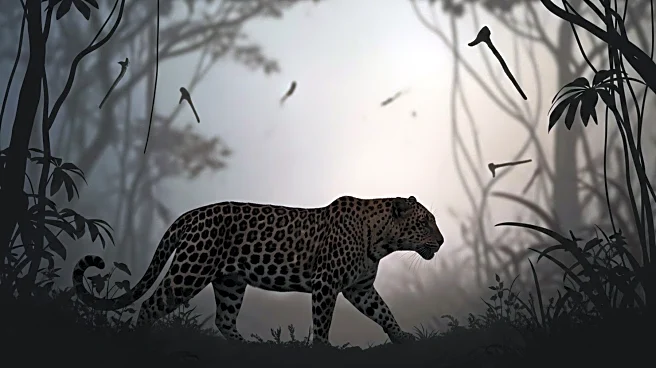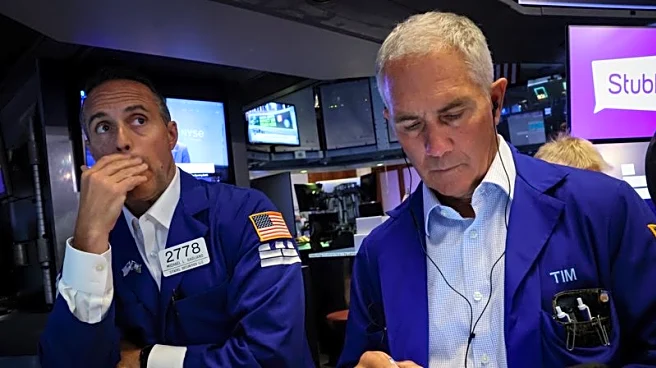What's Happening?
A recent study published in the journal Science has sparked debate over the timeline of human evolution. Researchers digitally reconstructed a crushed skull found in central China, suggesting that modern humans may have split from Neanderthals and other archaic humans over a million years ago. This challenges the previously accepted timeline of 500,000 to 700,000 years ago. The skull, unearthed in 1990, was initially thought to belong to Homo erectus, but its size and features led researchers to conclude it belonged to a group of early humans known as the longi clade, potentially including Denisovans. The study's findings propose that the longi clade branched from modern humans about 1.32 million years ago, while Neanderthals diverged 1.38 million years ago.
Why It's Important?
The study's implications could significantly alter the understanding of human evolution, affecting theories about the origins and migration patterns of early humans. If the timeline is accurate, it suggests that Homo sapiens are much older than previously thought, which could impact the study of human genetics and anthropology. The findings may also influence how scientists interpret fossil records and genetic data, potentially leading to new insights into human ancestry and the interbreeding between ancient human species. However, the study has faced skepticism from some researchers who argue that genetic evidence supports a more recent divergence.
What's Next?
Further research and analysis are needed to confirm the study's findings. The retrieval of DNA or proteins from the skull could provide more definitive answers about its relationship to other human species. Additionally, a third skull found at the same site in 2022 may offer more information. The scientific community will likely continue to debate the implications of this study, with potential revisions to the human evolutionary timeline depending on future discoveries and technological advancements in fossil analysis.
Beyond the Headlines
The study raises questions about the reliability of morphological analysis in determining evolutionary timelines. It highlights the challenges of reconstructing ancient fossils and the importance of integrating genetic data with physical evidence. The debate underscores the complexity of human evolution and the need for interdisciplinary approaches to understand our origins fully.

